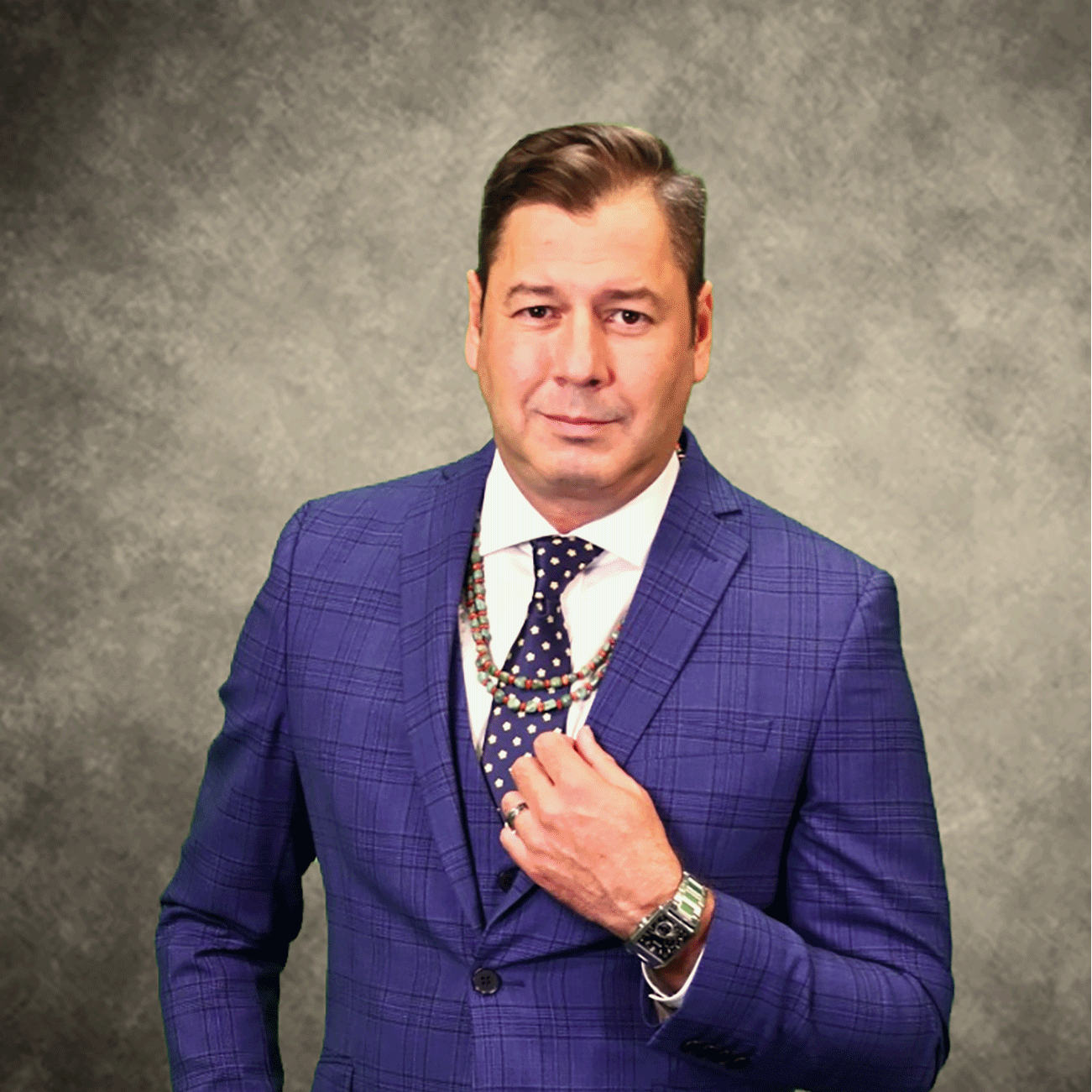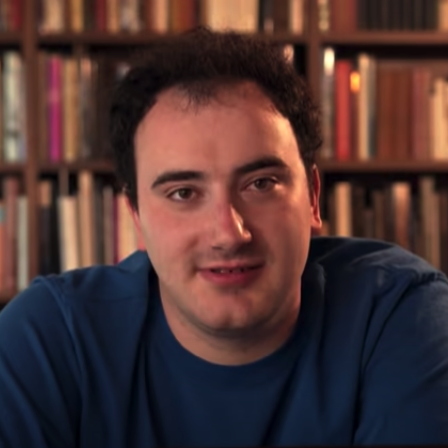Harvard Extension student Chris James has dedicated his career to promoting economic development in Native American communities. His work with the National Center for American Indian Enterprise Development was recently featured on Harvard University’s Upward Immobility podcast. We spoke with James about his experiences as a certificate seeker at Harvard Extension School. Read more about his journey here.
Can you tell us a bit about your background and your journey leading up to Harvard Extension School?
I’m originally from Cherokee, North Carolina. That’s the home of the Eastern Band of Cherokee Indians. I grew up there. My roots are there. My family has had small businesses on the reservation for over 50 years, so Western North Carolina is home and where I’ve spent a majority of my life.
At the start of my career, I ran a community development financial institution for the Eastern Band of Cherokee Indians. A friend suggested that I apply for a job in Washington, D.C., overseeing the Native American program at the Treasury Department. I was very skeptical that they would be interested in hiring somebody from Cherokee, North Carolina, to run a big office at the Department of Treasury. But of course you never know unless you apply.
I started that job at the Treasury Department in January of 2009, running a native initiative program for the Community Development Financial Institutions Fund. That role led to an eight-year career in Washington, D.C. I spent a little over two years at the Treasury. I was then appointed by President Obama to run the Office of Native American Affairs at the Small Business Administration [SBA]. I spent six and a half years at the SBA, including developing the Office of Intergovernmental Affairs and running the Office of Field Operations, which oversaw half of SBA’s workforce (60 offices throughout the United States.)
As a Presidential appointee, my tenure at SBA ended in 2016 with the close of the Obama Administration. Coincidentally, at this time, the nonprofit 501(c)(3) organization, the National Center for American Indian Enterprise Development, was seeking a president and CEO. So I applied, and after many conversations, they chose me for the position.
Why did you decide to start taking courses at Harvard Extension School?
I have a very full work schedule, and I normally work 50-plus hours, maybe sometimes longer. I was looking for something that was flexible to my work schedule. I also wanted a program that would both enhance what I’m already doing at the National Center and help me get an edge in my career. So the nonprofit management certificate was very appealing to me.
When I researched which university looked the best given my parameters, I chose Harvard Extension because of its flexibility. Most of the classes have been in the evenings. I can do the classes and still work a full day, and keep up with it all. I usually only take one class a semester, and I took one semester off last March because of a big event we had at that time, so it’s going to be a longer process for me. But I should have my certificate by December. I have one class left.
I do feel as though I’m in a unique situation. I’m not a typical student because I’m well into my career. But I think everybody, regardless of where they are in life or in their career, can always learn something new. I’m not taking the classes necessarily to get ahead; I’m taking classes to enhance the work that I already do.
What have you learned in your coursework that you can apply directly to your job?
“Principles and Practice of Fundraising” has been incredibly useful for me. In fact, those classes that have focused on fundraising have been the most useful, speaking generally. I’ve been able to use those courses to make a fundraising plan. Another class helped me create a communications campaign. Those are things I already did at the National Center, but the classes have helped me tweak my language and my approach. They’ve helped me think outside of the box, instead of using my standard approach.
The finance and accounting classes have also been very useful, even though my background is in economics. The focus specifically on nonprofit finance has been helpful. I work with businesses every day. I help with my clients’ accounting and finances so they can bring their businesses to the next level.
But nonprofit is a totally different ballgame. I treat my nonprofit, the National Center, as a business. And I think all the things I’ve learned in the classes at the Extension School have helped me build upon that philosophy. I have more than 20 employees and an additional 10 or so contractors. I have to make an annual budget every year. If I don’t run this organization as a business, then the organization is not going to operate to the best of its ability. That’s been my philosophy, and the nonprofit management classes have supported and encouraged that philosophy.
Have you been able to find courses that work for your schedule and are relevant to your interests and your needs?
I’ve had no problem finding the right courses. I think I’ve identified 12 to 15 classes that I think are awesome. I’ve really focused on the communications and fundraising courses, as well as leadership and management. But again, pursuing coursework is a significant undertaking. It takes extra time and when you’re working, balancing work and coursework can sometimes be a challenge. Keeping your personal motivation in mind makes finding that balance a bit easier.
What initiatives or projects does the National Center have coming up that you’re really excited about?
We’re able to move forward with our annual Reservation Economic Summit this year (July 2021). Of course, during the pandemic, we had to readjust—as everyone did—and reexamine how we handled training, technical assistance, conferences, etc. So we made the strategic decision, even in January of this year, to try to move forward with a hybrid model, with some in-person trainings as well as some virtual trainings.
The Reservation Economic Summit is a three-day training event, with matchmaking sessions and keynote speakers. The majority of the event is in person this year, following all CDC, state, and local COVID-related guidelines, but we have a virtual option as well. We’re really looking forward to that conference. It’s one of our biggest fundraisers of the year. As a nonprofit, $0.86 of every dollar we raise goes back into our programs. So for us, this conference means giving money back and creating businesses throughout Native American communities.
We’re also running our Native Edge Institutes again this year. These are generally one day courses where people can spend six hours on a focused training. A lot of these sessions focus on procurement and getting into different supply chains. But we’ve also had institutes around finance as well as leadership. We are committed to expanding this program. We conduct one of these institutes each month, in geographic locations close to our Native American communities. But we also plan to continue with a virtual option as well.
And finally, this year we’ve launched a Community Development Financial Institution (CDFI) called Native Edge Finance. We hope by late fall, we’ll be actually facilitating small business loans out of the CDFI. So that’s really exciting for me, because we’ve been working on it for a long time. Actually developing a financial institution, and getting ready to give loans, is a pretty big deal for us.
What types of adjustments did the National Center have to make during the pandemic?
By mid-March 2020, when states really began to shut down, we immediately began working with our clients on diversification. We tried to help them think about how to refocus their business without relying on customers coming through the doors. We worked with them on transferring to online meetings, changing the way they talked with financial institutions, and how they could get additional resources.
We advocated very, very closely under the CARES Act to make sure that Native American businesses got part of the relief packages that were being developed. We really wanted to make sure that Native American businesses didn’t get left out of any legislation, to make sure that tribes had access to federal resources.
In addition to advocating on behalf of our native communities, we also worked directly with those communities to help them access those resources. Accessing federal resources continues to be a challenge in rural American reservation communities. We worked with the Center for Indian Country Development at the Federal Reserve Bank of Minneapolis to conduct a widespread survey to identify how much of an impact COVID had on Native American businesses, especially those in remote, rural communities. With that information, we developed strategies for supporting those businesses. Making sure that our businesses knew that they had access to federal programs was one priority. Another was helping our Native American businesses establish relationships with traditional financing institutions. One of the greatest challenges facing rural communities is, quite literally, a lack of access to banks and financial institutions.
Finally, we spent a lot of time developing a COVID-19 response program specifically designed to help tribal communities access personal protective equipment (PPE). We developed a full program around PPE procurement. We created guidelines and online resources designed to help our businesses in two ways. First, we wanted to ensure that they avoided PPE scams. Second, we helped them, in some cases, change business practices so they could start manufacturing and selling PPE such as sanitizer or gowns.
Is the economic recovery in Native American communities matching the economic recovery we’re seeing at the national level?
I would say the economic recovery has been a little slower in rural America. When a business closes, it’s hard to reopen, especially if it’s a restaurant or a retail business. Even with all the available support networks, it’s hard to reopen once you’ve taken that initial hit.
And finding the work force to reopen has been difficult as well. We’re seeing that on a national basis, but it’s worse in rural America. Our reservation communities already had a limited workforce. So that has magnified the challenge for rural America and especially reservation communities.
This interview has been edited for length and clarity.

